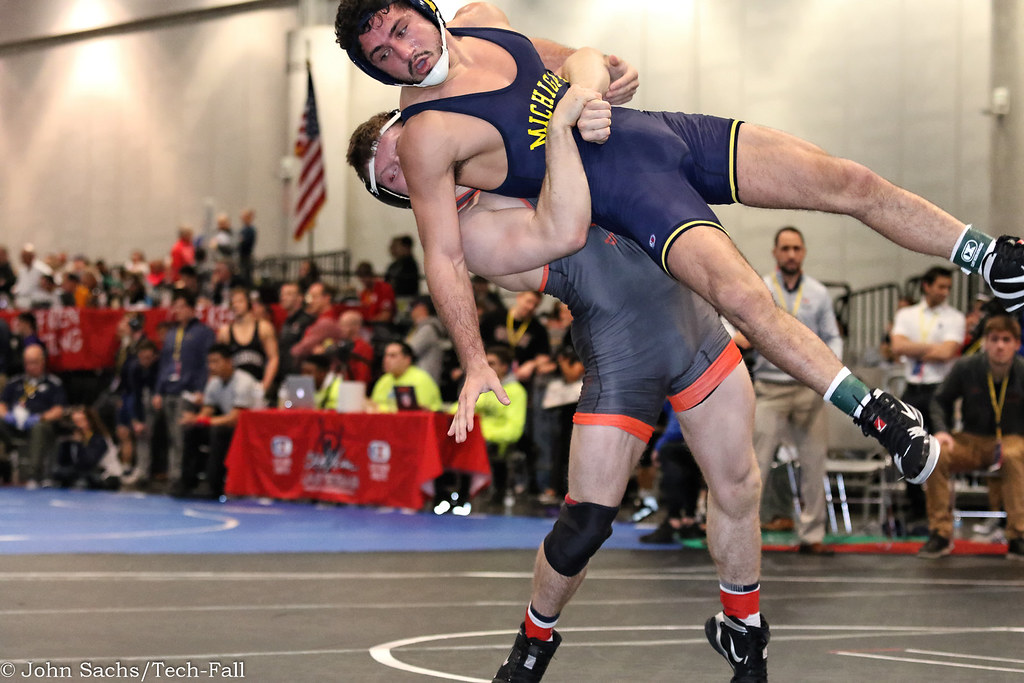Power is built from behind.
The posterior chain (glutes, hamstrings, and spinal erectors) plays a critical role in nearly every explosive wrestling action. From driving through a double leg to lifting an opponent off the mat or maintaining posture in a scramble, these muscles anchor movement and absorb stress. Yet in many high school strength programs I see, posterior chain development is still given minimal if any time, overshadowed by quad-dominant movements.
The situation has improved over the years, but the posterior chain remains either underemphasized or poorly targeted. A couple token sets of Romanian deadlifts once a week does not count in any way as “serious development”. This is likely due to many high school strength programs being taught by people who aren’t experienced strength coaches.
This oversight shows up in performance and injury trends. Athletes with weak posterior chains are more prone to lower back pain, hamstring pulls, and chronic knee irritation due to muscular imbalances. Not by coincidence, these are three of the most common wrestling injury sites.

When the glutes and hamstrings can’t generate or absorb force efficiently, compensation shifts to the lumbar spine and anterior knee. In matches, this leads to slower mat returns, weaker hip extension in bottom escapes, and decreased quickness in transitional phases. For a sport that demands rapid hip action under load and under fatigue, that gap becomes a serious liability.
The Solution
Fixing this oversight requires adjusting emphasis and exercise selection. Posterior dominant movements should appear multiple times a week in volumes large enough to force adaptation. A good starting point is to ensure athletes have 10-15 sets of hard posterior chain work per week.
Use a mix of rep ranges between 6-12. At least one lift a week should be in the low end of the spectrum. Ideally there is one day that focuses more on the backside than the quads in the weekly program. You can split this total volume into as many different days as you want.
Romanian deadlifts, glute ham raises, sled drags, Nordic curls, hip thrusts, and single-leg hinge variations are all great choices. These not only build posterior strength but also develop eccentric control, which is critical during sprawls and forced decelerations. The goal isn’t just raw strength, it’s control, coordination, and power through full ranges of motion.
The most overlooked part of the posterior chain are the spinal erectors. Barbell back extensions and safety bar good mornings are especially useful. They challenge the spinal erectors while maintaining neutral spine under fatigue. These lifts help wrestlers learn to maintain position under duress, absorb contact without collapsing, and build the trunk stiffness required for efficient force transfer.
Strong From the Ground Up
A stronger posterior chain with more horizontal force production also improves shot penetration and finishing ability. Wrestlers who can maintain strong hip drive through contact are harder to sprawl on and more effective at finishing under pressure.
Strong spinal erectors play a critical role for wrestlers by stabilizing the torso under load, resisting flexion during scrambles, and maintaining posture during lifts or mat returns. Athletes with well-developed erectors can stay upright and balanced through awkward tie-ups, minimize energy leaks during transitions, and reduce cumulative strain on the lower back.
Combined with upper back and grip strength, a powerful posterior chain creates performance that holds up through match and season.
Wrestling is a forward-driven sport, but performance is built from behind. A well-developed posterior chain drives performance and shields athletes from injuries that can derail a season. Ignoring it creates a ceiling on potential and leaves wrestlers vulnerable in the moments that matter most. Coaches who make posterior chain strength a priority give their athletes a decisive advantage every time they step on the mat.

